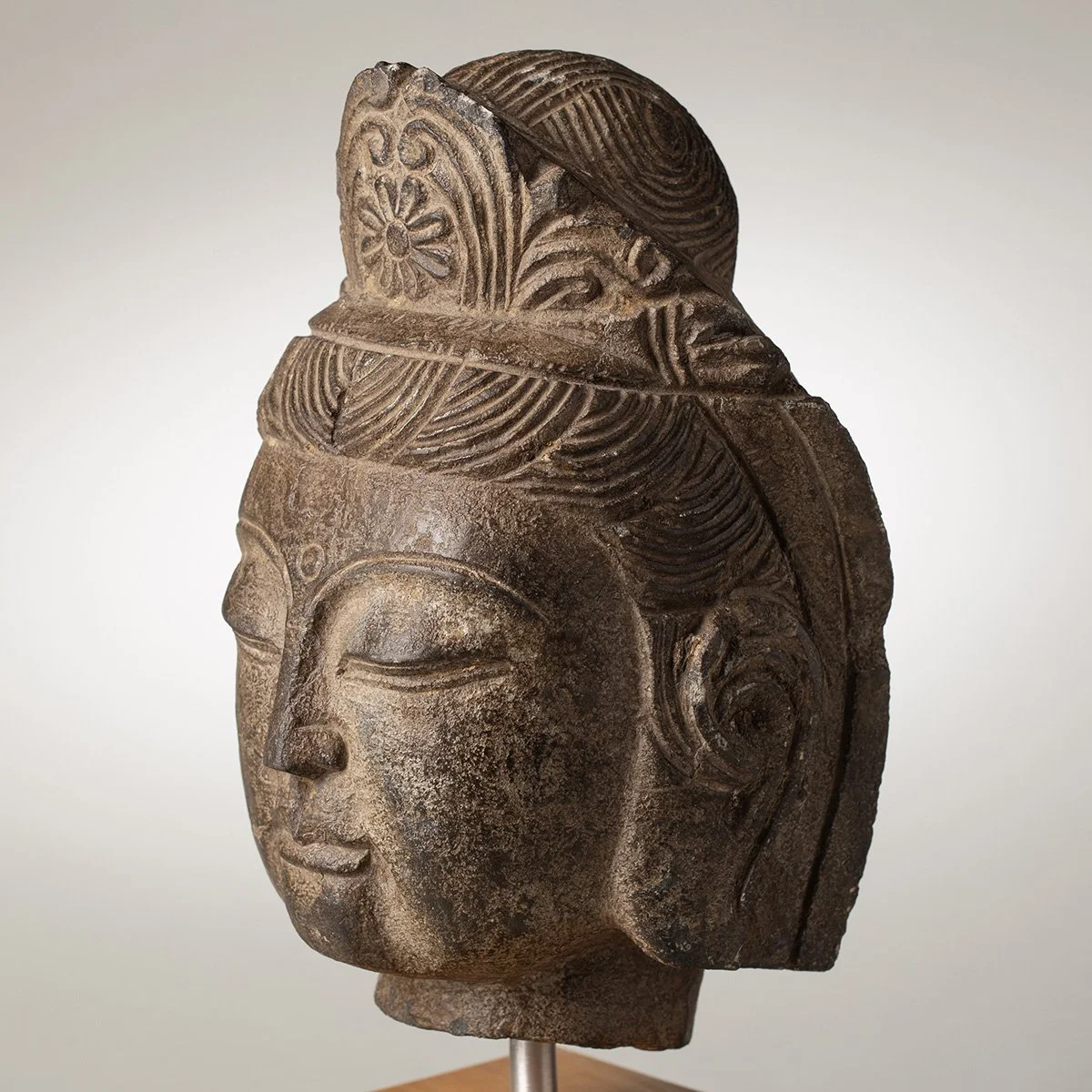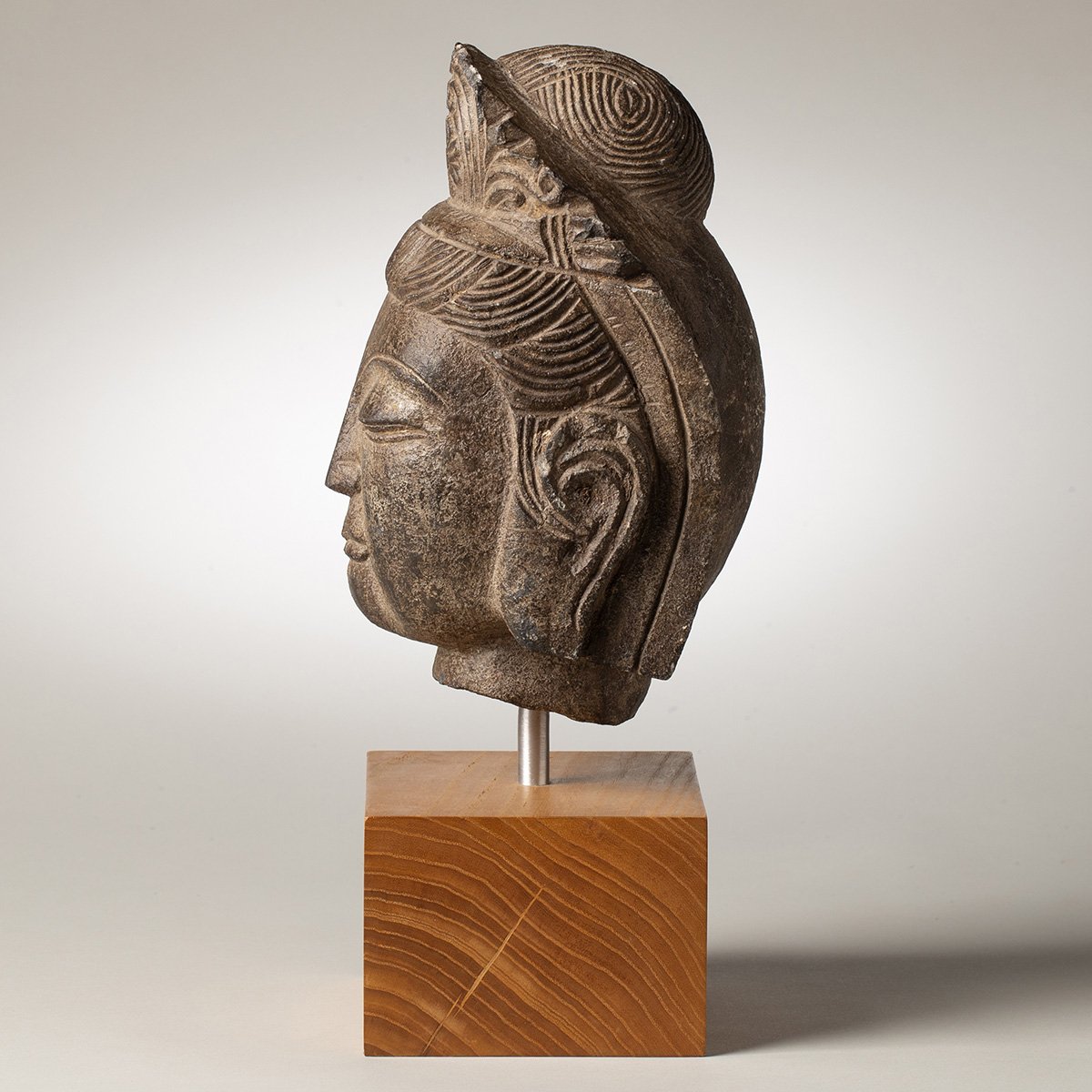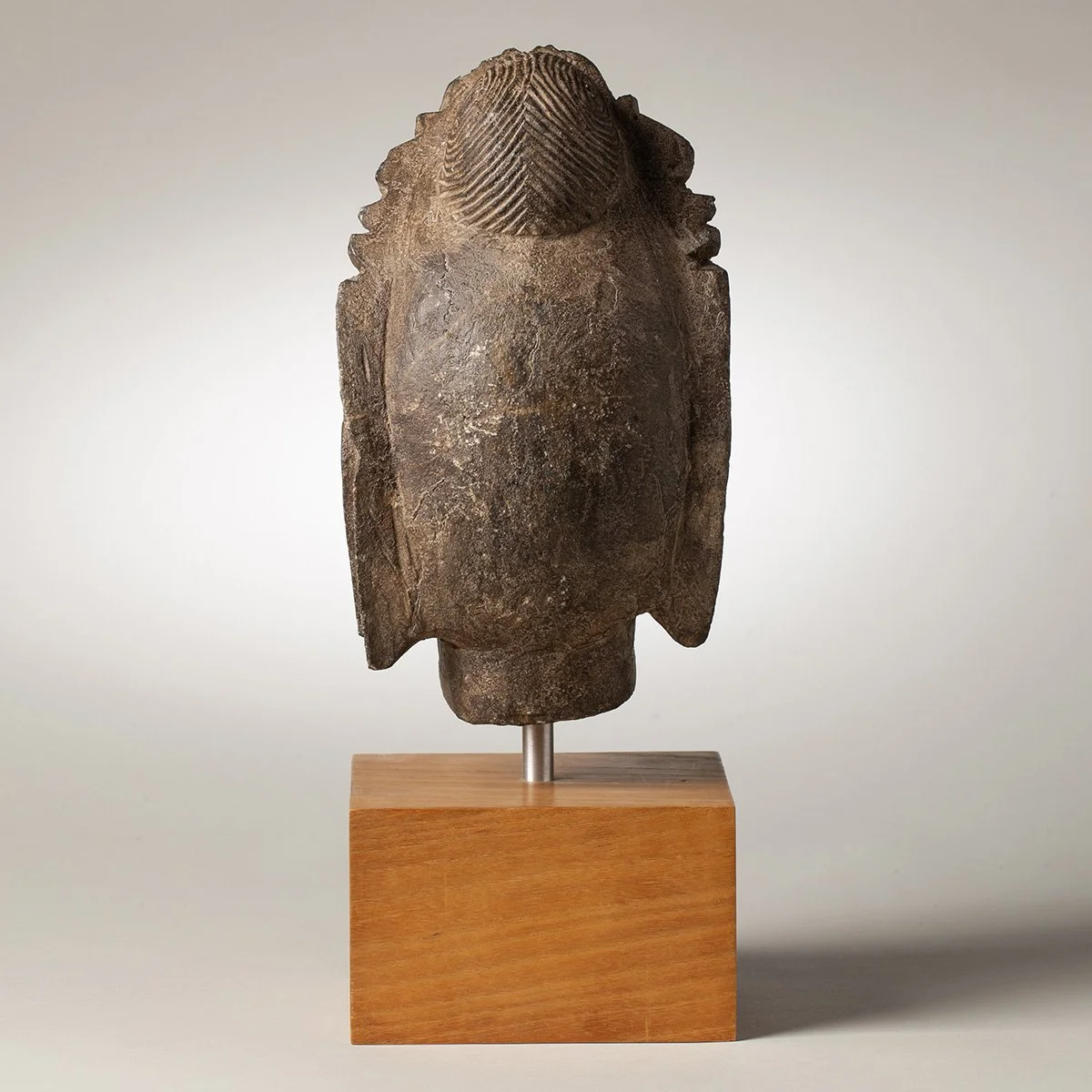 Image 1 of 6
Image 1 of 6

 Image 2 of 6
Image 2 of 6

 Image 3 of 6
Image 3 of 6

 Image 4 of 6
Image 4 of 6

 Image 5 of 6
Image 5 of 6

 Image 6 of 6
Image 6 of 6







Beautiful Limestone Head of Guanyin
Yuan Dynasty, China 1275-1368
Height: 11 1/4”
Dense gray limestone
Provenance: Acquired from Hartman Galleries, Fairmont Hotel Dallas, by Paul van Katwijk
Guanyin, the Buddhist bodhisattva of compassion, is a deity that was often depicted in Yuan dynasty art in a female form. Guanyin’s origins are in ancient India, where the bodhisattva was named Avalokitesvara, which translates to Guanyin in Chinese and means “one who hears the world’s cries”. In Indian art, Avalokitesvara was depicted as a young man, but in China, Guanyin’s portrayals began to include more feminized features during the Tang dynasty (618-907). By the Yuan dynasty, the female form of Guanyin was popular and widespread, and she was elevated to the rank of Goddess of Mercy.
Beautifully rendered from dense gray limestone, Guanyin is portrayed here with a serene and benevolent expression, her eyes downcast beneath elegantly arching brows centered by a circular urna (symbol of vision in the divine world). Her mouth is fleshy and carefully hemmed, and her cheeks are rounded in a youthful appearance. Her finely curled hair is drawn into a tall chignonand secured by a delicate foliate Buddhist tiara. The sculpture radiates an aura of serenity and commands its surroundings with a calm and quiet elegance.
Yuan Dynasty, China 1275-1368
Height: 11 1/4”
Dense gray limestone
Provenance: Acquired from Hartman Galleries, Fairmont Hotel Dallas, by Paul van Katwijk
Guanyin, the Buddhist bodhisattva of compassion, is a deity that was often depicted in Yuan dynasty art in a female form. Guanyin’s origins are in ancient India, where the bodhisattva was named Avalokitesvara, which translates to Guanyin in Chinese and means “one who hears the world’s cries”. In Indian art, Avalokitesvara was depicted as a young man, but in China, Guanyin’s portrayals began to include more feminized features during the Tang dynasty (618-907). By the Yuan dynasty, the female form of Guanyin was popular and widespread, and she was elevated to the rank of Goddess of Mercy.
Beautifully rendered from dense gray limestone, Guanyin is portrayed here with a serene and benevolent expression, her eyes downcast beneath elegantly arching brows centered by a circular urna (symbol of vision in the divine world). Her mouth is fleshy and carefully hemmed, and her cheeks are rounded in a youthful appearance. Her finely curled hair is drawn into a tall chignonand secured by a delicate foliate Buddhist tiara. The sculpture radiates an aura of serenity and commands its surroundings with a calm and quiet elegance.

